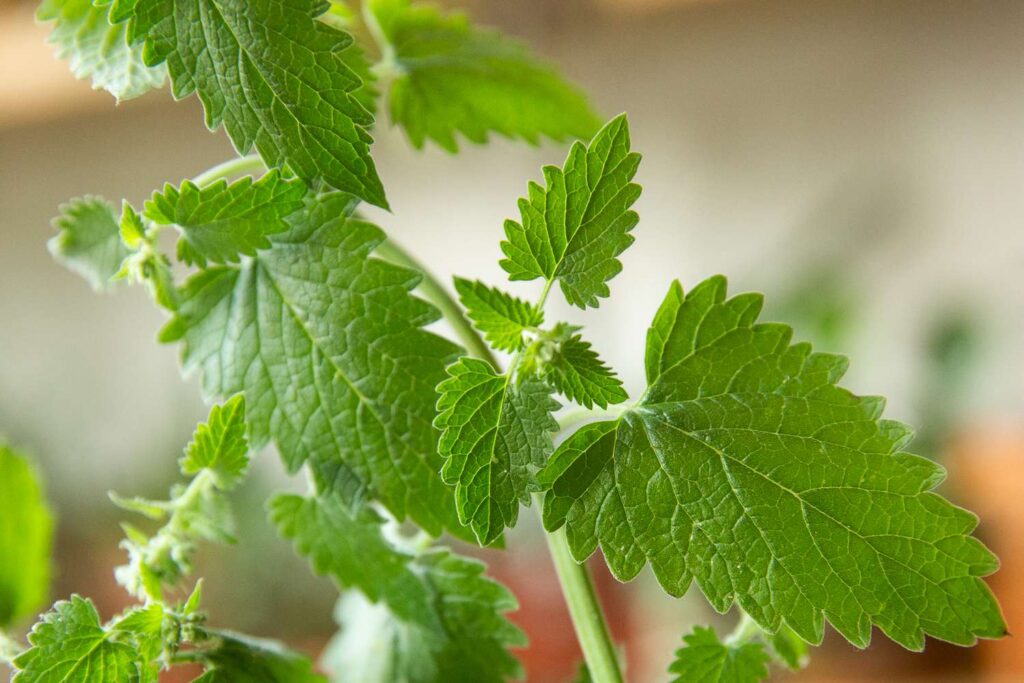
Catnip, scientifically known as Nepeta cataria, is a beloved herb among cat owners for its euphoric effects on feline companions. Cultivating catnip indoors allows for easy access and control over its growth, providing a continuous source of enjoyment for both cats and their human companions. In this article, we explore the essential steps and considerations for effectively caring for catnip plants indoors, ensuring their health and vitality for maximum .
I. Introduction to Catnip
What is Catnip?
Catnip is a perennial herb belonging to the mint family, known for its aromatic foliage and enticing effects on cats. It contains a compound called nepetalactone, which triggers a temporary state of euphoria in many cats when they come into contact with it.
Importance of Indoor Catnip Care
Caring for catnip indoors provides a convenient and controlled environment for cultivating this herb, ensuring its availability for cat enrichment activities. Indoor cultivation allows cat owners to monitor growth conditions, prevent outdoor pests, and extend the longevity of catnip plants.
Overview of Article Sections
This article will cover various aspects of indoor catnip care, including setting up a suitable growing environment, planting and watering techniques, maintenance practices, and tips for maximizing catnip enjoyment for both cats and their owners.
II. Setting Up Your Indoor Catnip Garden
Choosing the Right Location
Light Requirements
Catnip requires ample sunlight to thrive indoors, ideally receiving at least six hours of direct sunlight per day. Choose a location near a south-facing window or provide supplemental grow lights to ensure sufficient light exposure.
Temperature and Humidity
Maintain moderate temperatures between 65°F to 75°F (18°C to 24°C) and moderate humidity levels around 40% to 50% for optimal catnip growth. Avoid placing catnip plants near drafty windows or heating vents to prevent stress.
Selecting the Ideal Container
Pot Size and Material
Select a spacious container with sufficient drainage holes to accommodate the root system of catnip plants. Opt for clay or ceramic pots, which provide stability and allow for proper airflow to the roots.
Drainage Considerations
Ensure adequate drainage by layering the bottom of the container with gravel or small rocks before adding potting soil. Excess moisture can lead to root rot and other fungal diseases, so it’s essential to promote proper drainage.
Soil Preparation
Soil Type and Composition
Use well-draining potting soil with a pH level between 6.0 to 7.0 for growing catnip indoors. Avoid heavy soils that retain water, as they can suffocate the roots and cause plant stress.
Adding Amendments for Drainage and Nutrition
Enhance soil drainage and fertility by incorporating organic matter such as compost or perlite into the potting mix. This will improve soil structure, promote root development, and provide essential nutrients for healthy growth.
III. Planting and Watering Catnip
Planting Catnip Seeds or Seedlings
Seed Depth and Spacing
Sow catnip seeds thinly on the soil surface and lightly press them into the soil, as they require light for germination. Space seeds or seedlings at least 12 inches apart to allow for adequate airflow and prevent overcrowding.
Transplanting Seedlings
If starting catnip from seedlings, transplant them into individual containers once they develop their second set of true leaves. Handle seedlings gently to avoid damaging the delicate roots, and water thoroughly after transplanting to minimize transplant shock.
Watering Techniques
Frequency and Quantity
Water catnip plants consistently to keep the soil evenly moist but not waterlogged. Check the soil moisture regularly by inserting your finger into the soil; if it feels dry to the touch, it’s time to water.
Avoiding Overwatering and Underwatering
Overwatering can lead to root rot and fungal diseases, while underwatering can cause wilting and stunted growth. Strike a balance by watering catnip plants thoroughly when the top inch of soil feels dry, allowing excess water to drain away.
Mulching and Weed Control
Benefits of Mulching
Apply a layer of organic mulch such as straw or shredded leaves around catnip plants to conserve soil moisture, suppress weed growth, and regulate soil temperature. Mulching also enhances soil fertility as it decomposes over time.
Preventing Weed Competition
Regularly remove weeds and debris from around catnip plants to prevent competition for nutrients and sunlight. Use mulch to smother weeds and minimize the need for manual weeding, promoting a clean and healthy growing environment.
IV. Catnip Care and Maintenance
Pruning and Harvesting
Promoting Bushy Growth
Encourage bushy growth and prevent legginess by regularly pruning catnip plants. Pinch off the growing tips of stems to encourage lateral branching, resulting in a fuller and more compact plant.
Harvesting Catnip Leaves and Flowers
Harvest catnip leaves and flowers when they reach their peak flavor and aroma, typically before the plant blooms. Use sharp scissors or pruning shears to snip off individual leaves or cut entire stems for drying and storage.
Fertilization and Nutrient Management
Organic vs. Synthetic Fertilizers
Choose organic fertilizers formulated for herbs or vegetables to provide essential nutrients without the risk of chemical buildup. Alternatively, use compost or organic matter to amend the soil and enrich it naturally.
Feeding Schedule and Dosage
Fertilize catnip plants sparingly, as they are relatively low-maintenance and can thrive in nutrient-poor soil. Apply a balanced fertilizer at half-strength every 4 to 6 weeks during the growing season to support healthy growth and vigor.
Pest and Disease Management
Common Pests and Diseases
Monitor catnip plants for signs of common pests such as aphids, spider mites, and whiteflies, as well as fungal diseases like powdery mildew and root rot. Treat infestations promptly using natural remedies or organic pesticides to prevent damage.
Natural and Chemical Control Methods
Implement cultural practices such as proper sanitation, adequate air circulation, and pest-resistant companion planting to minimize pest and disease problems. If necessary, use botanical insecticides or horticultural oils as a last resort, following label instructions carefully.
V. Tips for Maximizing Catnip Enjoyment
Providing Enrichment for Cats
Interactive Toys and Games
Entertain and stimulate cats with interactive toys and games infused with dried catnip leaves. Activities such as chasing, pouncing, and rolling in catnip can provide mental and physical enrichment for feline companions.
Catnip-Safe Play Areas
Designate catnip-safe play areas indoors where cats can freely indulge in their favorite herb without fear of damaging other household plants or furniture. Create a cozy and inviting space with scratching posts, climbing trees, and comfortable bedding.
Monitoring Catnip Consumption
Avoiding Overindulgence
Monitor cats’ behavior and limit access to catnip if they exhibit signs of overstimulation or hyperactivity. Cats may experience temporary euphoria followed by a period of calmness or relaxation, so it’s essential to observe their reactions and adjust accordingly.
Recognizing Signs of Sensitivity or Allergy
Be aware of potential sensitivity or allergy to catnip in some cats, which may manifest as excessive drooling, vomiting, or diarrhea. If cats show adverse reactions to catnip, discontinue use and consult a veterinarian for guidance.
Storing and Preserving Catnip
Drying and Storing Fresh Catnip
Harvest catnip leaves and flowers when they are fully mature and free from moisture. Hang them upside down in a dry, well-ventilated area to air dry, then store them in airtight containers away from direct sunlight and moisture.
Creating Catnip Infusions and Treats
Infuse catnip leaves into homemade cat toys, treats, or herbal teas to provide additional enjoyment for cats. Experiment with different recipes and formulations to find the perfect catnip-infused treats that your feline friends will love.
In conclusion, taking care of catnip indoors requires careful attention to growing conditions, watering techniques, maintenance practices, and cat behavior observation. By following these guidelines and tips, cat owners can create a thriving indoor catnip garden that provides endless enjoyment and enrichment for their beloved feline companions.





